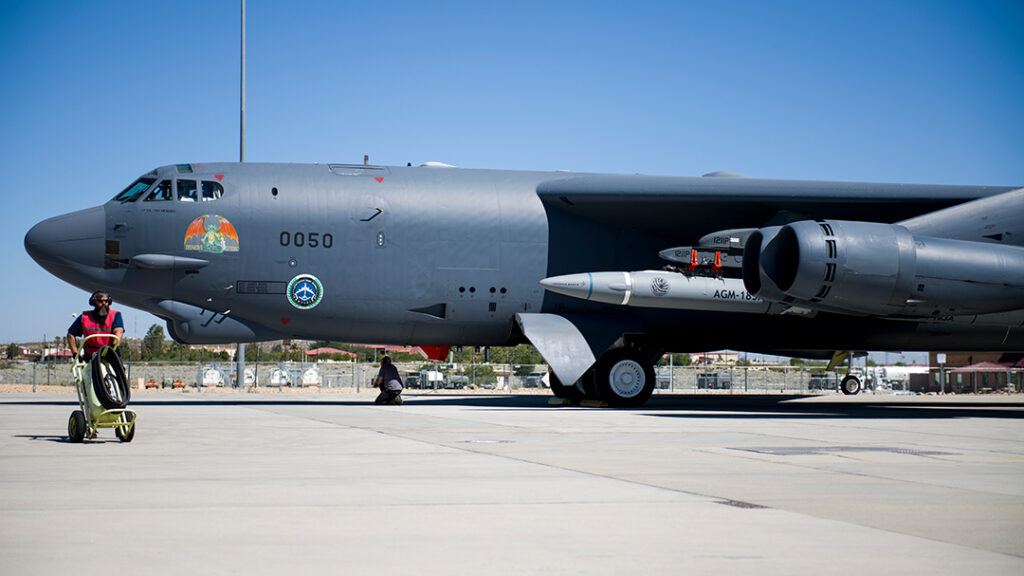THE WATCH staff
Despite a recent flight test that did not meet all of its objectives, the U.S. Air Force remains optimistic that it will begin production of its new hypersonic missile by the end of fiscal year 2022.
The Air Force is investigating why a rocket motor failed to ignite after the successful release of the Air-Launched Rapid Response Weapon (ARRW) from a B-52H Stratofortress on July 28, 2021, over Point Mugu Sea Range near Southern California. (Pictured: A B-52H of the 419th Flight Test Squadron undergoes preflight procedures at Edwards Air Force Base, California, before an ARRW test in 2020.)
The ARRW program’s executive officer for weapons, Brig. Gen. Heath Collins, pointed out that the Air Force quickly discovered what caused a previous unsuccessful flight test this year.
“We’re now going to learn from this next step and move forward,” Collins said, according to an August 4, 2021, report by Defense News magazine.
According to a July 29 Air Force news release, the latest test still demonstrated several successful “first-time events” after the missile’s release from the B-52 that included acquisition of GPS systems and power as well as operation of the missile’s fins.
“While it did not meet all flight objectives … the program continues to track toward fielding a hypersonic capability in the early 2020s,” the Air Force said in the news release.
The Air Force needs to successfully complete flight testing of the ARRW booster before it awards a contract to the manufacturer, Lockheed Martin.
Weapons such as the ARRW and those being developed by the Army and Navy are defined as hypersonic because they travel faster than Mach 5 — five times the speed of sound. Unlike conventional missiles, hypersonics pose challenges for early detection and interception because of their speed, maneuverability and low trajectories, according to a Congressional Research Service report. The weapons can deliver conventional or nuclear warheads.
The People’s Republic of China and Russia have invested heavily in developing hypersonic weapons systems.
“We are No. 3 in this race. We have to catch up,” said Robert Strider, deputy director of the Army Hypersonic Project Office, on August 10 at the Space and Missile Defense Symposium in Huntsville, Alabama, according to the online magazine Breaking Defense.
The Army is progressing with its Long Range Hypersonic Weapon, Strider said.
“We are moving very rapidly toward getting this capability put in place,” Strider said, according to Breaking Defense. “We’re very, very confident that we’re going to meet our 2023 fielding date.”
Despite that 2023 goal, Strider said the Army expects to start training operations staff on the missile system’s ground-based equipment in October 2021.
The Army is developing its weapons system in conjunction with the Navy, whose version will be sea-launched and called the Conventional Prompt Strike weapon. A joint flight test is expected in 2022, according to a May 27, 2021, story in Defense News.
The Air Force is developing multiple types of hypersonic weapons to launch from planes, which requires a different engineering approach, according to a May 12 story in Breaking Defense.
“Developing first-of-its-kind missiles is difficult business and this why we test,” Collins said in the Air Force news release.
IMAGE CREDIT: GIANCARLO CASEM/U.S. AIR FORCE

